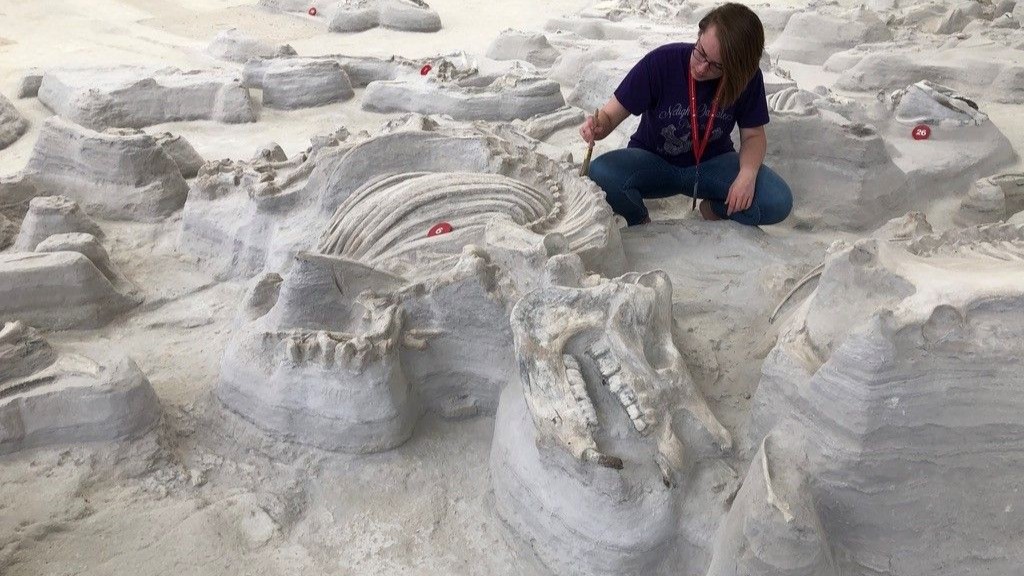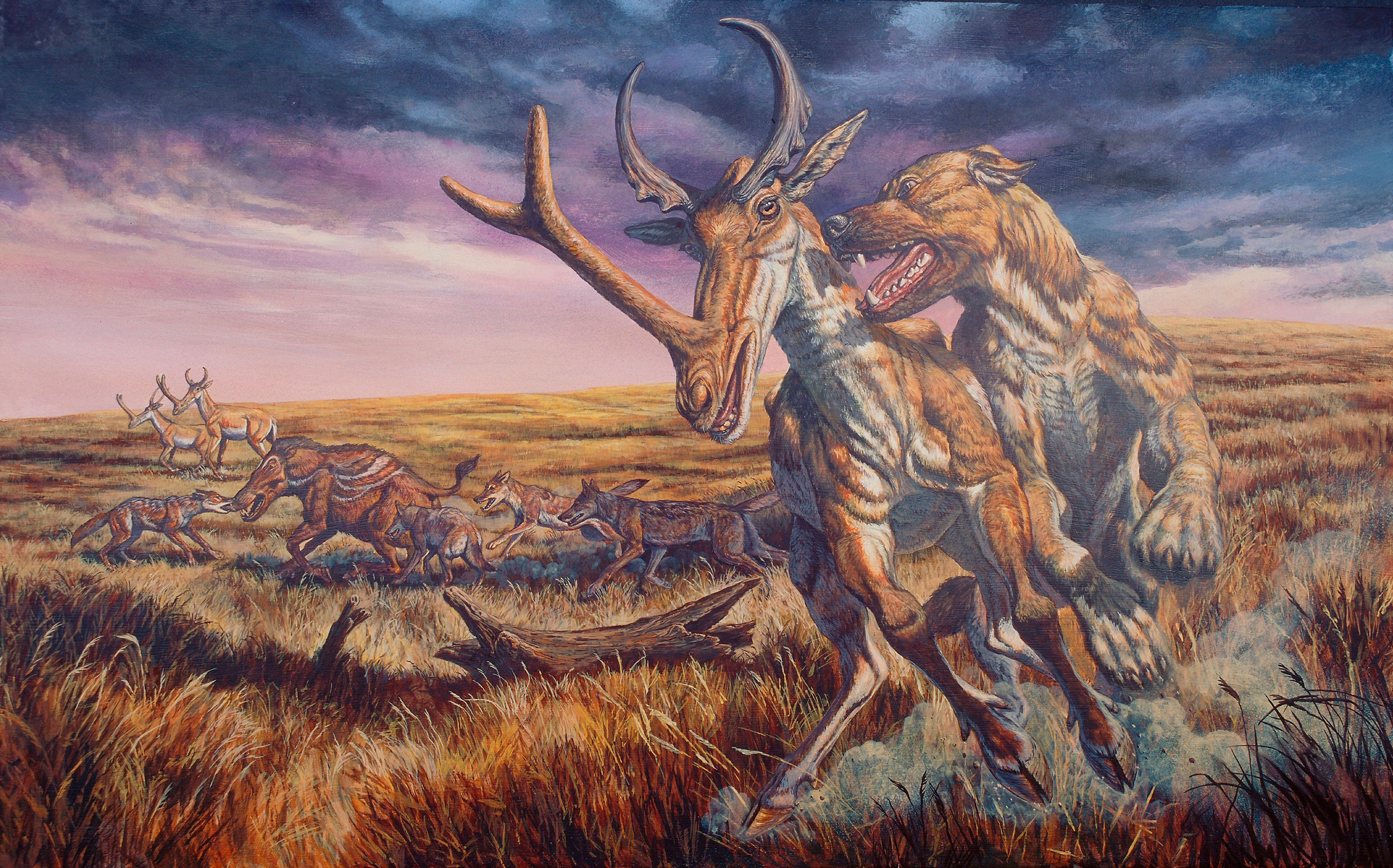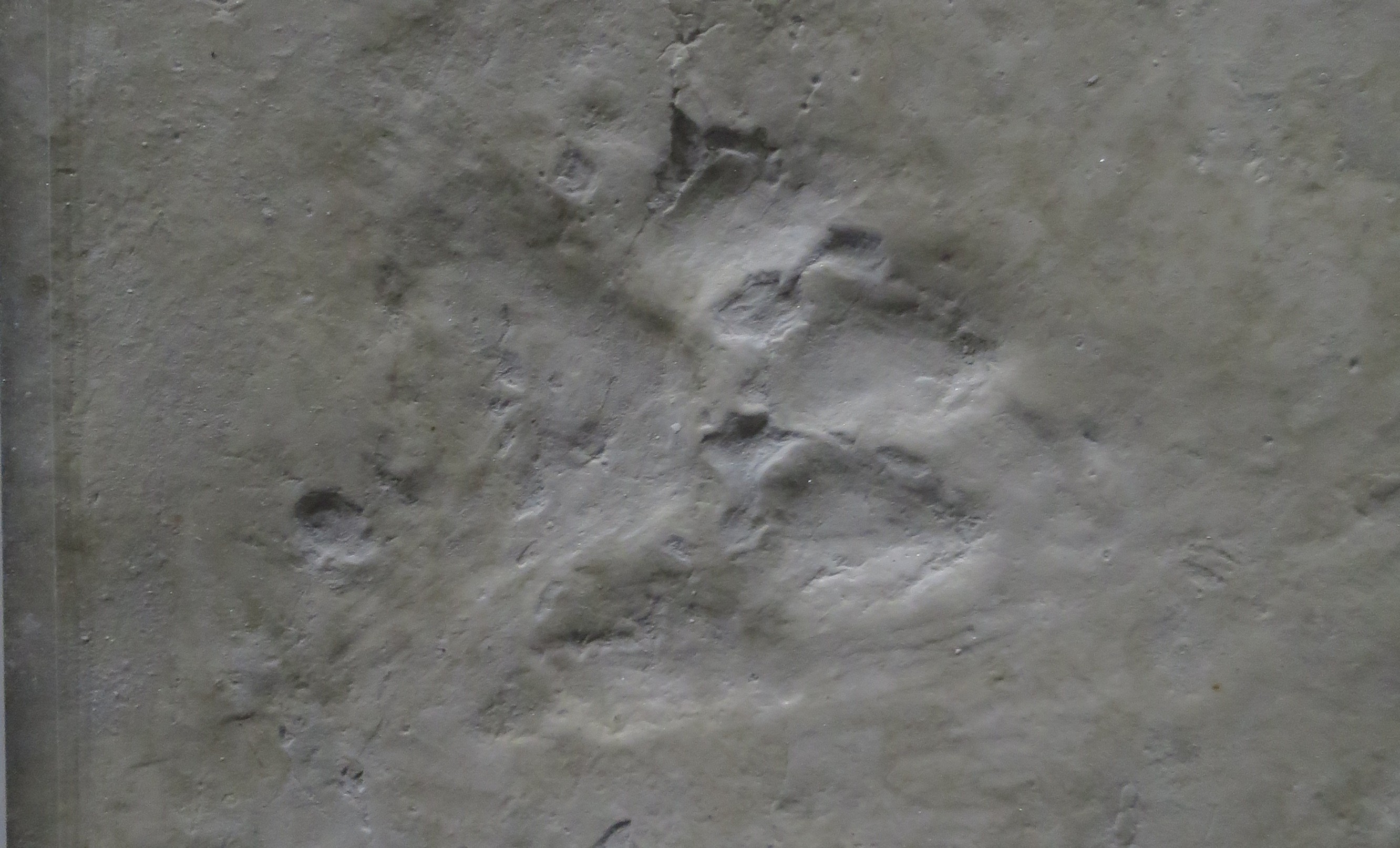Large, bone-crushing dogs stalked 'Rhino Pompeii' after Yellowstone eruption 12 million years ago, ancient footprints reveal
Researchers have found footprints of large, bone-crushing dogs in the 12 million-year-old Ashfall Fossil Beds in northeastern Nebraska, suggesting these large carnivores may have survived a cataclysmic Yellowstone eruption that covered parts of North America in ash.

Ancient footprints have revealed that large, bone-crushing dogs stalked the ashy wastes of North America in the wake of a devastating Yellowstone supereruption 12 million years ago.
Researchers uncovered the footprints above the skeletons of extinct rhinoceroses called Teleoceras in the Ashfall Fossil Beds of northeastern Nebraska. The dog tracks mark the first direct evidence of large carnivores in the beds, which are nicknamed "Rhino Pompeii" because they have preserved so many Teleoceras rhinos that perished in widespread fallout from volcanic activity at Yellowstone.
"The eruption was so massive that ash would have fallen like snow 1,000 miles [1,600 kilometers] from the eruption site in Idaho," Ashley Poust, a curator of vertebrate paleontology at the University of Nebraska State Museum, told Live Science. "This would have darkened the skies, buried plant life and water sources, and been a real hazard to anything with a delicate respiratory system."
Ancient horses, giraffe-like camels, numerous rhinos and various other animals were entombed in glass-like ash at the Nebraska site. However, until the footprint discovery, researchers hadn't found hard evidence of large meat eaters in the beds, which is unusual, given the abundance of preserved prey.
The footprints were up to 3.2 inches (8 centimeters) long and 3 inches (7.5 cm) wide, matching those of the large, extinct canids Aelurodon taxoides and Epicyon saevus, which crushed and ate bones like modern hyenas do. Not only do the footprints confirm the presence of large carnivores in the beds, but their positioning above the rhino layers suggests that the dogs survived the cataclysmic event that wiped out many animals.
"Survival of top predators after ecological collapse is a little unexpected and has a lot to teach us about how life responds and recovers after disasters," Poust said. Big predators sit at the top of the food chain, so they normally starve if it collapses.

Poust presented preliminary findings from his research Nov. 12 at the Society of Vertebrate Paleontology 2025 annual meeting in Birmingham, England. The findings haven't been peer-reviewed yet, as Poust and his colleagues still have to complete their research and submit it to a journal.
Get the world’s most fascinating discoveries delivered straight to your inbox.
The clearest trackways were uncovered in 2014 and 2023, according to the researchers. While the footprints have yet to be formally described in a journal, their existence isn't a secret. Poust said people visiting the Ashfall Fossil Beds State Historical Park can see the footprints, and his team has subjected the tracks to laser scanning within the public's view. Epicyon is also listed on the University of Nebraska State Museum's ashfall animals webpage.
Northeastern Nebraska once had a similar environment to the African plains. Poust noted that the Ashfall Fossil Beds preserved a seasonal lake that hosted aquatic life, like turtles, and attracted all manner of animals.
"Imagine a watering hole similar to those on the savanna today, but with slightly unfamiliar animals," Poust said. "The sandy shoreline would have been shared by flocks of birds and herds of short-legged rhinos, camels, and five species of horses, some with three toes on each foot."

The dog tracks are present in multiple ash layers and point in different directions, which Poust and his colleagues say is an indication that the predators were making extended or repeated visits to the area after it was caked in volcanic fallout.
It's not yet clear how the dogs were surviving at the time, but one possibility is that they fed on buried rhinos and other carcasses in the immediate aftermath of the eruption.
"There is some evidence that they may have scavenged among the animals who didn't survive, using the buried rhinos as a food cache," Poust said. "But since we haven't found the bones of these meat eaters, we aren't sure yet whether this was enough to see them through to better times, or whether they eventually had to depart to seek their fortunes elsewhere in the massive disaster zone that covered much of North America."

Patrick Pester is the trending news writer at Live Science. His work has appeared on other science websites, such as BBC Science Focus and Scientific American. Patrick retrained as a journalist after spending his early career working in zoos and wildlife conservation. He was awarded the Master's Excellence Scholarship to study at Cardiff University where he completed a master's degree in international journalism. He also has a second master's degree in biodiversity, evolution and conservation in action from Middlesex University London. When he isn't writing news, Patrick investigates the sale of human remains.
You must confirm your public display name before commenting
Please logout and then login again, you will then be prompted to enter your display name.
